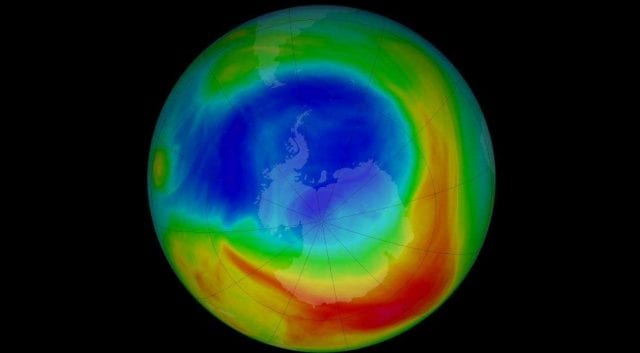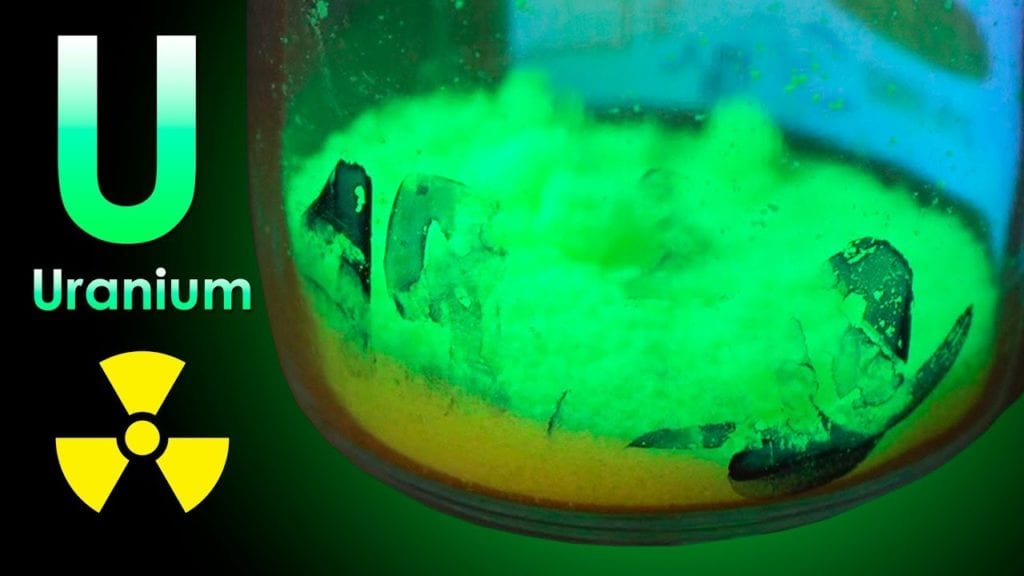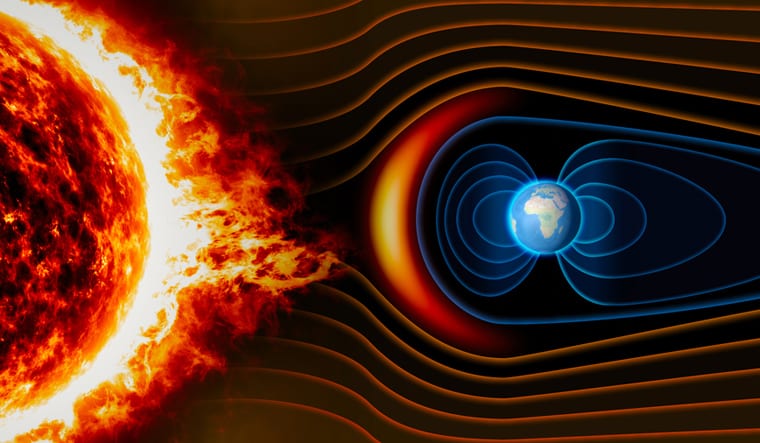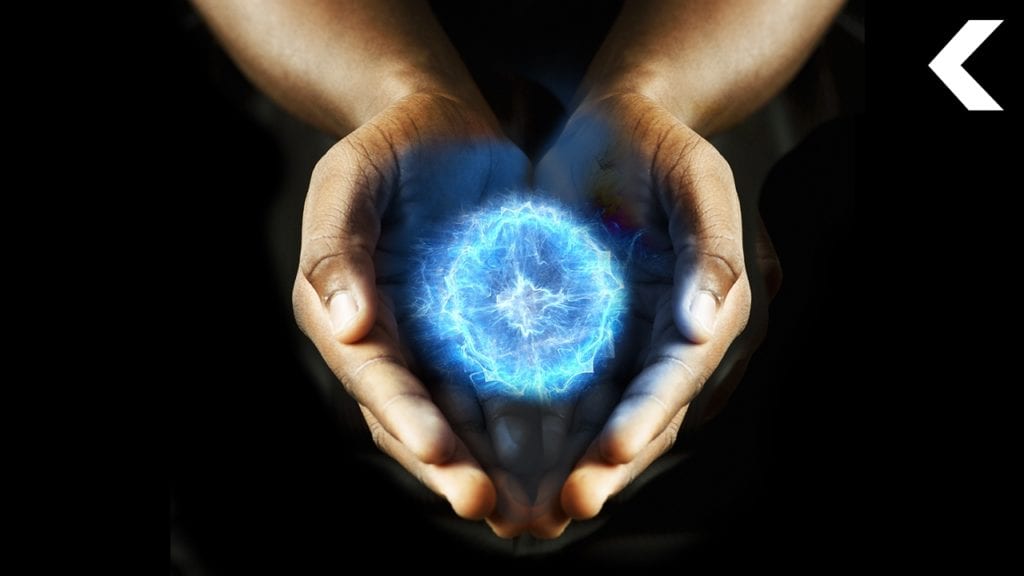 Mysteries
Mysteries  Mysteries
Mysteries  History
History 10 Surprising Stories About the Texas Rangers
 Humans
Humans 10 Philosophers Who Were Driven Mad by Their Own Theories
 Miscellaneous
Miscellaneous 10 Video-Game-Worthy Weapons and Armors from History
 Weird Stuff
Weird Stuff 10 Psychics Who Accurately Predicted Wartime Events
 The Arts
The Arts 10 Pieces of Art Inspired by a Broken Heart
 Health
Health 10 Science Fiction-Sounding New Medical Treatments
 History
History 10 Surprising Facts About the Father of Submarine Warfare
 Space
Space Ten Astonishing New Insights into Alien Worlds
 Weird Stuff
Weird Stuff 10 Bizarre Summer Solstice Rituals Still Practiced Today
 Mysteries
Mysteries Top 10 Haunting Facts About the Ghost Ship MV Alta
 History
History 10 Surprising Stories About the Texas Rangers
 Humans
Humans 10 Philosophers Who Were Driven Mad by Their Own Theories
Who's Behind Listverse?

Jamie Frater
Head Editor
Jamie founded Listverse due to an insatiable desire to share fascinating, obscure, and bizarre facts. He has been a guest speaker on numerous national radio and television stations and is a five time published author.
More About Us Miscellaneous
Miscellaneous 10 Video-Game-Worthy Weapons and Armors from History
 Weird Stuff
Weird Stuff 10 Psychics Who Accurately Predicted Wartime Events
 The Arts
The Arts 10 Pieces of Art Inspired by a Broken Heart
 Health
Health 10 Science Fiction-Sounding New Medical Treatments
 History
History 10 Surprising Facts About the Father of Submarine Warfare
 Space
Space Ten Astonishing New Insights into Alien Worlds
 Weird Stuff
Weird Stuff 10 Bizarre Summer Solstice Rituals Still Practiced Today
Top 10 Things You Won’t Believe Your Body Has
The human body is a magnificent machine. Our anatomy is the result of millennia of adaptation to Earth’s changing environment, which has turned us into one of the most complex life forms. And while advances in medicine over the past centuries have allowed us to explore the nature of the human organism in detail, we never stop discovering new components and processes within our bodies. Some of those constituents, moreover, would never have been thought to exist in previous times. From explosive elements to cosmic stuff, here you will be presented with some of the strangest, most amazing, and largely unknown things that make up your body.
See Also: 10 Amazing Things You Didn’t Know Our Body Parts Can Do
10Alcohol
 Alcoholic beverages are among the most consumed drinks in the world. Such is the case that currently, about 36 billion liters (9.5 billion gallons) of alcohol are consumed every year around the world, enough to fill more than 14,000 Olympic pools. So it is clear that alcohol and human beings are closely linked to each other. In fact, they seem to be so linked that the human body produces its own alcohol at all times.
Alcoholic beverages are among the most consumed drinks in the world. Such is the case that currently, about 36 billion liters (9.5 billion gallons) of alcohol are consumed every year around the world, enough to fill more than 14,000 Olympic pools. So it is clear that alcohol and human beings are closely linked to each other. In fact, they seem to be so linked that the human body produces its own alcohol at all times.
Ethanol is a naturally occurring type of alcohol created after fermentation of organic materials and is the alcohol present in alcoholic beverages. In the human body, bacterial populations in the mouth and intestines are capable of producing ethanol endogenously. To do that, bacteria and yeast cause the fermentation of carbohydrates such as sugar in the gastrointestinal tract. This process generates small amounts of ethanol, which is subsequently introduced into the bloodstream.
According to multiple studies, a healthy—and sober—person generally has up to 0.8 milligrams of endogenous ethanol per liter (0.26 gallons) of blood. Methanol, another type of alcohol, has also been detected in human blood in concentrations of 0.6 milligrams per liter. Fortunately, these values are too small to be easily detected in the blood and cause legal problems.
But some people do not have it that easy, especially those suffering from conditions such as the so-called “auto-brewery syndrome” (ABS). Under such conditions, an individual’s digestive system is overpopulated with fermentation-producing bacteria and fungi, making huge amounts of alcohol from sugar-rich foods. People with ABS can have more than four grams (0.14 ounces) of alcohol per liter of blood, to the point of always being drunk without drinking any alcoholic beverage.[1]
9 Ozone

Ozone is an unstable substance. Being composed of three oxygen atoms, ozone tends to disintegrate into simpler molecules in minutes. For that reason, the ozone gas in the atmosphere must be continuously replenished and would decrease until almost disappearing if it were not for certain ozone-producing sources. Ultraviolet radiation, thunderstorms, and human activities produce most of the ozone present on Earth. But your body also contributes to it.
Nearly two decades ago, scientists discovered that the human body’s immune system produces ozone as a way to fight biological threats. Our bodies contain cells called neutrophils, white blood cells coated with antibodies, which travel through the body to eliminate infectious bacteria and fungi. To do their job, neutrophils feed their antibodies with high-energy oxygen molecules. The antibodies then transform such molecules into ozone, which is useful for eliminating invasive bacteria. Neutrophils engulf the foreign microorganisms and bombard them with the newly created ozone molecules to destroy them.
Since almost three-quarters of our body’s white blood cells are neutrophils, the amount of molecular ozone produced in each person is significant enough. However, this is not a good thing – ozone in large concentrations is harmful. At 25 kilometers (15.5 miles) above Earth, ozone composes a gas layer protecting Earth’s life from solar radiation. But near the ground, ozone contributes to air pollution, being one of the main components of the so-called “smog.” And in the human body, ozone breaks down cholesterol, creating toxic molecules that accelerate the development of diseases such as atherosclerosis and arthritis.[2]
8 Cyanide

For humans, cyanide is an extremely toxic chemical compound. It kills in a short time by preventing cellular respiration in the organism. Cyanide’s lethality is more than proven; it has been used as a chemical weapon to kill countless people over the centuries. For that reason, it is surprising to know that cyanide exists naturally within the human body itself.
Various concentrations of cyanide enter our bodies every day since the chemical is present in the air, water, and food we eat. In fact, foods such as apples and spinach are carriers of cyanide. But there is no need to panic – such concentrations are extremely small, in the order of a few micrograms per plant (for the record, a microgram equals one-millionth of a gram). In contrast, an intake of 0.1 grams of cyanide is necessary to kill a 70-kilogram (154-pound) average person.
Our bodies also produce cyanide. For example, chemical processes in saliva lead to the creation of cyanide gas inside our throats, which is then expelled by breathing. It is estimated that, at any given time, a healthy person can contain up to 50 micrograms of cyanide per 100 grams (3.5 ounces) of tissue. But such compound does not accumulate inside our bodies. Most of it is processed in the liver and excreted in the urine. Another part is converted into carbon dioxide by our lungs, and like the aforementioned cyanide gas, it is released with each breath.
The processes behind the absorption, production, and detoxification of cyanide in the human organism are quite complex. So we must thank our bodies for silently freeing ourselves from such a lethal poison.[3]
7 Radioactive Elements

Any type of radiation in excessive amounts is harmful to humans. For example, even if ultraviolet radiation is not trying to burn our skin, the background radiation found everywhere will be pushing us to get cancer anyway. But did you know that some radioactive materials also inhabit our interior?
A radioactive element found inside our bodies is thorium, a heavy metal used in electronic devices. While we ingest small amounts of thorium daily through food and water, it usually leaves the organism in a matter of days.
Another of the most infamous substances we carry is uranium. It is a heavy, highly radioactive element that exists naturally across the entire planet. As you may know, its biggest uses have been in nuclear reactors and weapons of mass destruction. Studies indicate that an average adult person contains 22 micrograms of uranium in their body and can ingest about five micrograms daily. The biggest sources of uranium intake are food—especially unwashed vegetables—and water.
Once inside the body, uranium can enter the bloodstream and deposit in various organs, staying there for a few months until being expelled from the body. Two-thirds of the uranium consumed is deposited in our bones.
We should also mention potassium-40, a radioactive isotope of the potassium element that we ingest through many foods, but which is beneficial for the human body. As you can see, we are pretty radioactive. But do not be alarmed; it is unlikely that you will trigger a nuclear explosion just by sneezing.[4]
6 Precious Metals

Not everything in your body has to be dangerous or radioactive, though. There are also precious elements inside you that make you economically valuable by nature. Even so, it is not advisable that you try to get them out of your body to sell them.
First, we have gold. Most of the gold in an average person is in their blood, with gold accounting for 0.02 percent of it. In total, the human body contains 0.2 milligrams of gold, enough to make a cube of pure gold with a size of 0.22 millimeters (0.008 inches). We also contain silver, another precious metal of low toxicity for human beings. An average person consumes up to 88 micrograms of silver a day, a weight equivalent to a few sand grains.
But that is too little to be valuable, right? Well, researchers have found that human feces also contain gold particles and other expensive metals. One kilogram (2.2 pounds) of human waste could contain a maximum of four grams (0.14 ounces) of copper, silver, vanadium, and gold. Given this, it has been estimated that the waste of one million people could be worth 13 million dollars.
So even while you did not know it, your body has constantly been a money-making machine. The problem, of course, is to mine your own precious metals to make a profit from them, since you might have to resort to some nasty methods to extract them.[5]
5 Hard Drugs
It is well known that the human body produces its own versions of some commonly used drugs. For example, our bodies produce endocannabinoids, molecules similar to the chemicals found in marijuana. Our brains also produce chemical compounds called endorphins, which cause the same pain-killing effects as morphine. But the human organism can naturally generate other drugs that, in large enough amounts, would be life-threatening and totally illegal.
One such drug is called dimethyltryptamine, or DMT. This drug is commonly extracted from certain South American plants and can be drunk, smoked, or injected. DMT produces serious hallucinogenic effects, with users claiming to have traveled to other worlds or met divine beings after ingesting the drug. However, there is evidence that the human brain regularly produces small amounts of DMT. It is believed that the drug could be released in the body during deep sleep or in near-death experiences.
Another human-produced drug is a substance known as GHB, sometimes called “liquid ecstasy.” This substance has very diverse uses; bodybuilders ingest it to gain muscle, while doctors prescribe it to treat sleep disorders. But GHB can become very dangerous if it is not used correctly.
Among other cases, ingesting GHB along with alcohol can kill a person or leave them in a coma. That is why it is surprising to know that our bodies contain the drug naturally, although in minuscule and non-harmful amounts. GHB is found in many tissues of the body, in the blood and also in the brain, in concentrations of up to one milligram per liter.
It is convenient to warn that both DMT and GHB are illegal drugs, and their use is prohibited in many countries. So be cautious when telling someone that you make those substances, even if it is true.[6]
4 Magnetic Fields

Magnetism is essential for the continuity of life. The magnetic influence of the Sun, for example, protects our planet from cosmic radiation. And without the Earth’s magnetic field, solar radiation would destroy our atmosphere and kill us like ants under a magnifying glass. But magnetic forces are not limited only to celestial bodies. Life forms also generate their own magnetism, and we are no exception.
Electric currents produce magnetism, so every object with electric currents flowing inside also has a magnetic field. And since humans run on electricity moving through our nervous system, the latter is the one that generates magnetic fields inside and around our bodies. In addition, each of our organs works with a specific amount of electricity, so each part of the body has its own magnetic field.
It is estimated that the strength of the magnetic field on the human body’s surface is one ten-millionth of the strength of the Earth’s magnetic field. Meanwhile, the magnetic field of the brain is about 200 million times weaker than that of our planet. On the contrary, the winner among the most magnetic organs is the heart. It has a magnetic field just one million times smaller than the magnetic force of the Earth. The heart’s magnetic field is so strong that it extends outside the body and is believed to affect certain biological processes.
As you can see, the magnetic forces of the human body are very small. But that has not stopped some people from claiming that they are magnetic enough to attract metal. What benefits has the ability to stick spoons to the body, on the other hand, is not something well known.[7]
3 Stardust

This point is much more comprehensive than the rest because not only do we have stardust in our bodies but we are actually made of it. The idea that humans are composed of stellar materials has been around for decades now, but recently we could prove that it is a reality.
At the beginning of the universe, there were only basic elements such as hydrogen and helium. When these chemicals clumped together to form the first stars, heavier and more complex elements began to be produced inside those bodies. Such elements were carbon, nitrogen, oxygen, phosphorus, iron, and sulfur. These elements, in turn, make up human beings almost entirely.
How did these elements get to Earth? When stars reach the end of their lives, they usually explode, ejecting their outer layers with plenty of different elements. After traveling great distances for a long time, the remains of these exploding stars fall to the Earth’s surface, where they mix with the rest of the ground. Then, plant life absorbs such elements dispersed in the soil, and we do the same by eating those plants.
Over the years, the materials formed inside the stars become part of our bodies, which are renewed with such elements all the time. Two years ago, researchers discovered that 97 percent of the atoms in the human body are of the same types as those found in stars. Moreover, 93 percent of the body’s mass is believed to be stardust.[8]
2 Light

It has been known for a long time that the human body emits light radiation. To give an example, the heat of our bodies produces infrared light, a type of electromagnetic radiation that humans cannot see, although other animals can. Now, when it comes to emitting visible light, one might think that such a thing is impossible for us. Like almost all matter in the universe, we reflect light, but we do not emit it, right? Well, that is not entirely true.
In 2009, a scientist from the Tohoku Institute of Technology (Japan) named Masaki Kobayashi decided to investigate human bioluminescence – our ability to emit light. To do that, he recruited five individuals and photographed their naked bodies for 20 minutes every three hours, for three days. The photographs were taken with cameras extremely sensitive to light. The results showed that certain portions of the individuals, such as their necks and heads, emitted light constantly, reaching a maximum brightness around four in the afternoon.
This is probably a consequence of our biological clock, due to which we spend more energy during the late afternoon. Scientists believe that our bioluminescence is produced by small molecules called fluorophores, which emit photons after interacting with electrons released by cellular respiration.
But if we emit light, why do we not glow as if we were flashlights with eyes? The answer is pretty ironic: the visible light we produce is too weak for us to see. In fact, such light is a thousand times less intense than what our eyes are adapted to detect. But there it is, coming out from us every second. So not only are you made of stardust, but you also shine like a star. Well, maybe not so much.[9]
1 Antimatter

Matter and antimatter hate each other. When these two substances collide they mutually annihilate, leaving only energy behind. But despite how volatile antimatter is in our universe, we have a bit of it inside us, all the time.
To understand how this is possible, we need to bring back potassium-40, which we previously said exists in the human body. As already stated, potassium-40 is one of the radioactive isotopes or variants of potassium, a soft metal. Such isotope decays—that is, it transforms into another element after its atoms lose energy. To do that, potassium-40 can be transformed into calcium-40 through a process called beta-minus decay.
A potassium-40 atom loses some particles during this process and generates others, including an antimatter particle called an antineutrino. And this is where the math begins. It is estimated that 5,000 potassium-40 atoms decay per second in the human body. Around 89.25 percent of these atoms undergo beta-minus decay. Therefore, at least 16 million antineutrinos are generated in our bodies every hour.
Meanwhile, potassium-40 can also be transformed into the isotope argon-40. This occurs when each of the potassium-40 atoms releases a positron, the antimatter version of the electron. However, this process is very rare, happening in 0.001 percent of cases. But even so, considering the potassium-40 atoms that decay per second, that means the human body generates about 180 positrons per hour.
And this is the result of just one radioactive isotope transforming inside the body. But we also have other elements that decay in the same ways, generating their own antiparticles at every moment. So, congratulations, you are also an antimatter reactor.[10]
For more lists like this, check out 10 Mind-Blowing Things You Didn’t Know Your Brain Can Do, and 10 Things You Didn’t Know Plants Could Do.








